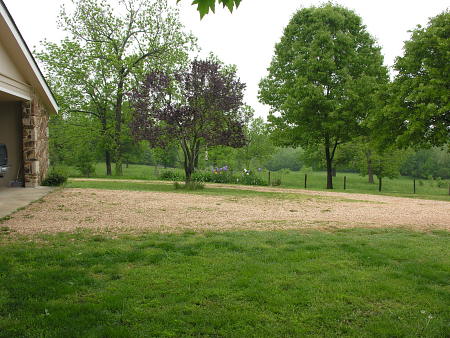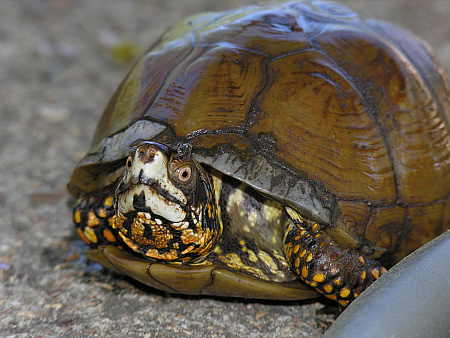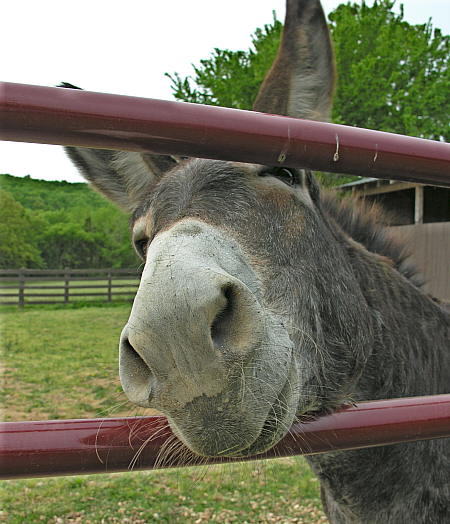Prior to buying the ranch we are at, Retta and I took the opportunity to visit the property several times, doing the due-diligence inspections all property purchasers should undertake (including, I should note, the all important survey). During these visits, we noticed, behind the former milking barn, an odd looking contraption, half-buried amongst the odds and ends that always seems to accumulate behind old milking barns. As neither of us recognized what this object was, it soon disappeared into the deepest recesses of our memory banks. On our last visit prior to closing escrow, while watching television at the Comfort Inn we were staying at, we saw an episode of the P. Allen Smith gardening show.  One particular segment of the show featured something called a chicken tractor. And what the show portrayed on the screen looked very similar to the contraption sitting behind the milking barn. Now we knew what that thing was – a chicken tractor. I had previously heard of lawn tractors, garden tractors, farm tractors, and even tractor-trailers, but I had never heard of a chicken tractor!Â
When Retta and I found that we had become the proud owners of chickens (see previous post), we faced the problem of deciding where to house them, and we needed to learn the basics of caring for them. While looking for information at the local farm store, we ran across a book entitled “Chicken Tractor – The Permaculture Guide to Happy Hens and Healthy Soil”. That caught my attention instantly, as I never want to be accused of having unhealthy soil, and heaven forbid, unhappy chickens!  Consequently, I purchased that book and learned everything one could possibly know about chicken tractors. Everything.  Including the information I shall now share with you. First, here is what one chicken tractor looks like:
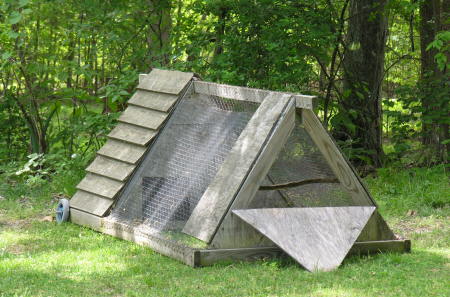
From this picture you can see that this tractor has an enclosed shelter area, which includes a nesting box elevated off the ground. There is also an outside pen. Both areas of the tractor are exposed to the ground. Here is how the chicken tractor is operated. Put the chickens inside. Close the door. Feed and water the chickens daily. Move the tractor daily. Clean out the nesting box periodically. And that is all there is to it.
There are several advantages to utilizing a chicken tractor to house your fowl. Because the chickens have access to your lawn at all times, they will help control insect populations. The chicken droppings will help fertilize the lawn. Most important, the chicken tractor should protect your birds from predators.
There are disadvantages to the chicken tractor as well. The tractor has to be heavy enough to stay put in heavy winds. The weight makes it difficult to move unless it is designed with an efficient wheel mechanism (which the one above does not have). In the photograph below, you can see another type of chicken tractor. This is a commercial chicken tractor, manufactured in Missouri, that is designed to be both lightweight and strong.
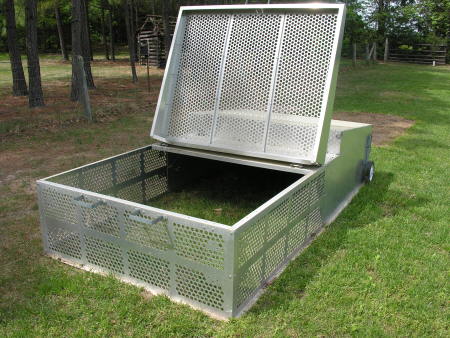
In this style of chicken tractor, the lighter weight is offset by the improved stability that the low, wide profile provides. Varmints cannot overturn a tractor of this type, and it’s light weight make it fairly easy to move around your lawn. In the following photograph, you can see the design of the three nesting boxes that are a part of this tractor. The boxes have exterior lids, making it easy to collect eggs and add litter. The slide-out floor at the bottom allows for easy litter removal.

Now for the bad news about chicken tractors. The biggest drawback to the use of a chicken tractor is that, no matter how heavy and sturdy you construct it, varmints can burrow into it easily, simply by digging a hole in the ground anywhere along it’s sides. We once lost a whole batch of chickens in one night alone, after some unknown critter dug its way underneath the sides of the tractor.
We now utilize permanent coops for our fowl, with concrete footings at the base. This prevents critters from taking the underground route to our birds. And what has become of our two chicken tractors? The wooden tractor has become an infirmary and isolation ward for any bird that might happen to need that type of TLC. And the aluminum chicken tractor is just the right size to store a pickup-truck size load of trash. When it fills up with trash bags, I load the truck and take it over to the county transfer station to dispose of it. But that is another story.

